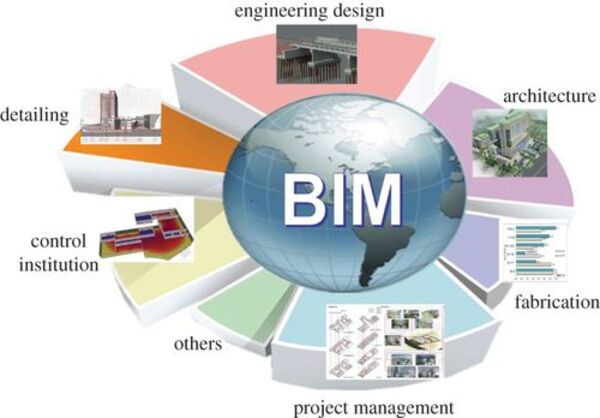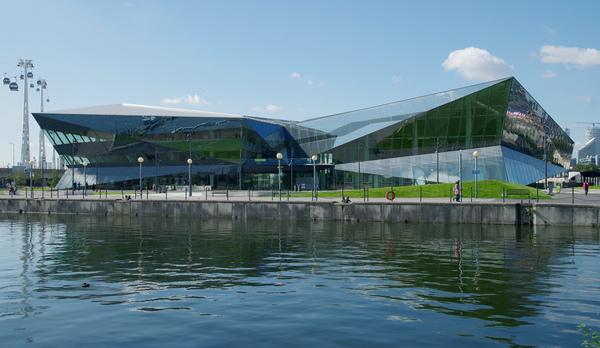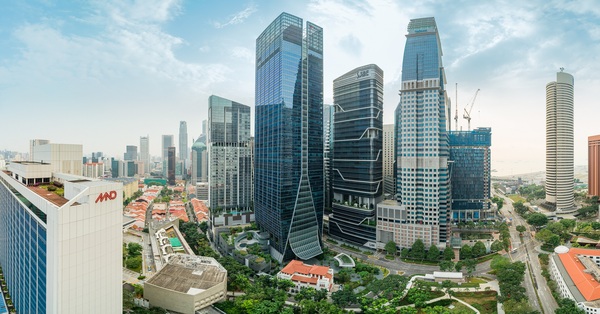
Sustainability in Facilities Management: Harnessing BIM for Environmental Benefits
In an era where environmental consciousness and sustainability have taken center stage, every industry finds itself at a pivotal crossroads. We are faced with the profound challenge of reevaluating age-old practices and embracing innovative solutions to reduce our collective carbon footprint. Within this transformative landscape, facilities management emerges as a cornerstone, holding the key to shaping the sustainability of our built environment.
The management of buildings and facilities, often operating behind the scenes, wields tremendous influence over the environmental impact of our modern structures. As we seek to harmonize our existence with the natural world and preserve resources for generations to come, it's becoming increasingly evident that facilities management is no exception to the sustainability imperative. Amidst this imperative, Building Information Modeling (BIM) has risen as a formidable protagonist, ushering in a paradigm shift in facilities management, underpinned by a multitude of environmental benefits. In this article, we embark on a journey to explore the symbiotic relationship between sustainability and facilities management.

The Imperative for Sustainable Facilities Management
Before delving into the advantages of BIM in facilities management, it's crucial to understand the growing importance of sustainability in the built environment. Buildings and infrastructure account for a significant portion of global energy consumption and greenhouse gas emissions. According to the World Green Building Council, buildings are responsible for approximately 39% of global carbon emissions. This statistic underscores the urgent need for more sustainable practices in facilities management.
Sustainable facilities management encompasses a wide range of activities, including optimizing energy usage, reducing water consumption, minimizing waste generation, and promoting eco-friendly construction and maintenance practices. Achieving these objectives requires a holistic approach that integrates technology, data, and collaboration among various stakeholders. This is where BIM steps in as a transformative solution.
Building Information Modeling (BIM): A Sustainable Revolution
Building Information Modeling (BIM) is a digital representation of a building's physical and functional characteristics. It is a comprehensive process that involves creating and managing digital models of a facility throughout its lifecycle. BIM has gained widespread adoption in the architecture, engineering, and construction (AEC) industry for its ability to streamline design, construction, and operation processes. However, its potential impact on sustainability in facilities management is often underestimated.

Sustainable Resource Management with BIM
One of the primary environmental benefits of BIM in facilities management is its ability to support sustainable resource management. Here's how BIM contributes to this crucial aspect of sustainability:
Efficient Space Utilization
One of the key aspects of facilities management is optimizing space utilization within a building. BIM provides accurate 3D models of a facility, enabling facilities managers to visualize and analyze space utilization. This visualization can lead to more efficient layouts and better allocation of resources, reducing the need for additional construction and minimizing the environmental impact associated with expansion.
Improved Resource Allocation
BIM enables facilities managers to track the use of resources such as water, electricity, and materials in real time. By monitoring resource consumption patterns, facilities managers can identify areas of excessive use and implement strategies to reduce waste. For example, detecting water leaks or energy inefficiencies can lead to immediate corrective actions, resulting in resource savings and environmental benefits.
Sustainable Materials Management
Sustainable materials management is a critical component of facility sustainability. BIM allows for the creation of digital catalogs of building materials, including their environmental attributes. Facilities managers can make informed decisions about material selection, choosing options that are environmentally friendly and have a lower carbon footprint. This can include selecting materials with recycled content, low VOC (volatile organic compound) emissions, and energy-efficient properties.
Lifecycle Analysis
BIM facilitates the tracking of a facility's entire lifecycle, from design and construction to operation and maintenance. This long-term perspective is essential for sustainable resource management. It enables facilities managers to plan for maintenance and replacement of equipment and systems, ensuring that they are replaced with energy-efficient alternatives when necessary. Additionally, BIM can help predict when major renovations or upgrades will be required, allowing for budgeting and scheduling that minimizes disruption and waste.

Energy Efficiency through BIM
Energy efficiency is a cornerstone of sustainability in facilities management, and BIM offers several avenues for improving energy performance:
Energy Modeling and Simulation
BIM enables detailed energy modeling and simulation of a building's performance. By inputting various design parameters and environmental conditions, facilities managers can predict how a building will perform in terms of energy consumption. This allows for the optimization of building designs for maximum energy efficiency before construction even begins.
Real-Time Energy Monitoring
Once a facility is operational, BIM can integrate with energy management systems to provide real-time data on energy consumption. This data can be used to identify energy-intensive areas within the facility and implement energy-saving measures. For example, adjusting HVAC settings, optimizing lighting systems, and identifying equipment that is not operating efficiently can lead to significant energy savings.
Predictive Maintenance
BIM's ability to track the condition of building systems and equipment allows facilities managers to schedule maintenance activities proactively. Regular maintenance ensures that systems operate at their peak efficiency, reducing energy waste and extending the lifespan of equipment. This approach not only saves energy but also reduces the need for premature replacement, which can have a substantial environmental impact due to the manufacturing and disposal of equipment.
Renewable Energy Integration
As the world shifts towards renewable energy sources, BIM can assist facilities managers in integrating renewable energy systems such as solar panels, wind turbines, and geothermal heating and cooling into building designs. By analyzing the building's energy requirements and potential energy generation from renewables, BIM can help optimize the size and placement of these systems, further reducing the facility's reliance on fossil fuels.
Challenges and Considerations
While BIM offers significant potential for sustainability in facilities management, it is essential to acknowledge the challenges and considerations associated with its implementation.
Implementation Costs
Implementing BIM in facilities management requires an initial investment in technology, training, and software. However, the long-term benefits in terms of resource savings and energy efficiency often outweigh the initial costs.
Skill and Training
Effective use of BIM requires skilled personnel who can operate the software and interpret the data generated. Investing in training and hiring qualified staff is crucial for successful implementation.
Data Management
BIM generates vast amounts of data, and managing this information efficiently is essential. Facilities managers need robust data management systems to ensure that BIM data remains accurate, up-to-date, and accessible to all relevant stakeholders.
Collaboration
Successful implementation of BIM in facilities management relies on collaboration between various stakeholders, including architects, engineers, contractors, and facilities managers. Effective communication and information sharing are essential for the system to deliver its full potential.
Privacy and Security
With the increasing use of digital data in facilities management, there are concerns about data privacy and cybersecurity. Robust security measures must be in place to protect sensitive information.
Case Studies: Real-World Applications of BIM in Sustainable Facilities Management
To fully appreciate the tangible impact of Building Information Modeling (BIM) in advancing sustainability within the realm of facilities management, it's crucial to explore real-world examples where BIM has been successfully deployed to foster sustainability. These case studies serve as beacons, illuminating the practical and transformative potential of BIM in the pursuit of sustainable facilities management.

The Crystal, London, UK
The Crystal is one of the world's most sustainable buildings, and it serves as an exhibition space and conference center for sustainable technology and design. BIM was used extensively in its design and construction phases. After completion, BIM models were used for facilities management, allowing the building managers to monitor energy consumption, optimize HVAC systems, and track water usage in real-time. This data-driven approach has helped reduce operational costs and improve the building's overall sustainability.

Heathrow Airport Terminal 2, UK
Heathrow Airport's Terminal 2 is one of the busiest terminals in Europe. BIM was used during its construction to coordinate various trades and ensure that the building met sustainability goals. After construction, the BIM model was adapted for facilities management. It allowed airport authorities to monitor energy consumption, track the condition of critical systems, and plan maintenance schedules more effectively. As a result, Terminal 2 has achieved substantial energy savings and a reduced carbon footprint.

Frasers Tower, Singapore
Frasers Tower, a premium office building in Singapore, integrated BIM into its facilities management strategy. BIM models were used to manage the building's systems, including lighting, air conditioning, and water usage. This helped the building management team optimize energy consumption and reduce operational costs while maintaining a comfortable and sustainable working environment for tenants.
Conclusion
Sustainability in facilities management is no longer an optional consideration but a fundamental requirement for responsible building operation. Building Information Modeling (BIM) offers a powerful tool to achieve sustainability goals by enhancing resource management and energy efficiency. From efficient space utilization to real-time energy monitoring and predictive maintenance, BIM empowers facilities managers to make informed decisions that benefit both the environment and the bottom line.
As the adoption of BIM in facilities management continues to grow, it is essential for organizations to invest in the necessary technology, training, and data management strategies. By doing so, they can not only reduce their environmental footprint but also create healthier, more efficient, and more resilient buildings for future generations.
In a world where sustainability is no longer an option but a necessity, BIM is paving the way for a greener, more sustainable future in facilities management. It's time for organizations to harness the power of BIM and take the lead in building a more sustainable environment for all.
Check https://app.bidlight.com for how BidLight can help you estimate your BIM model!